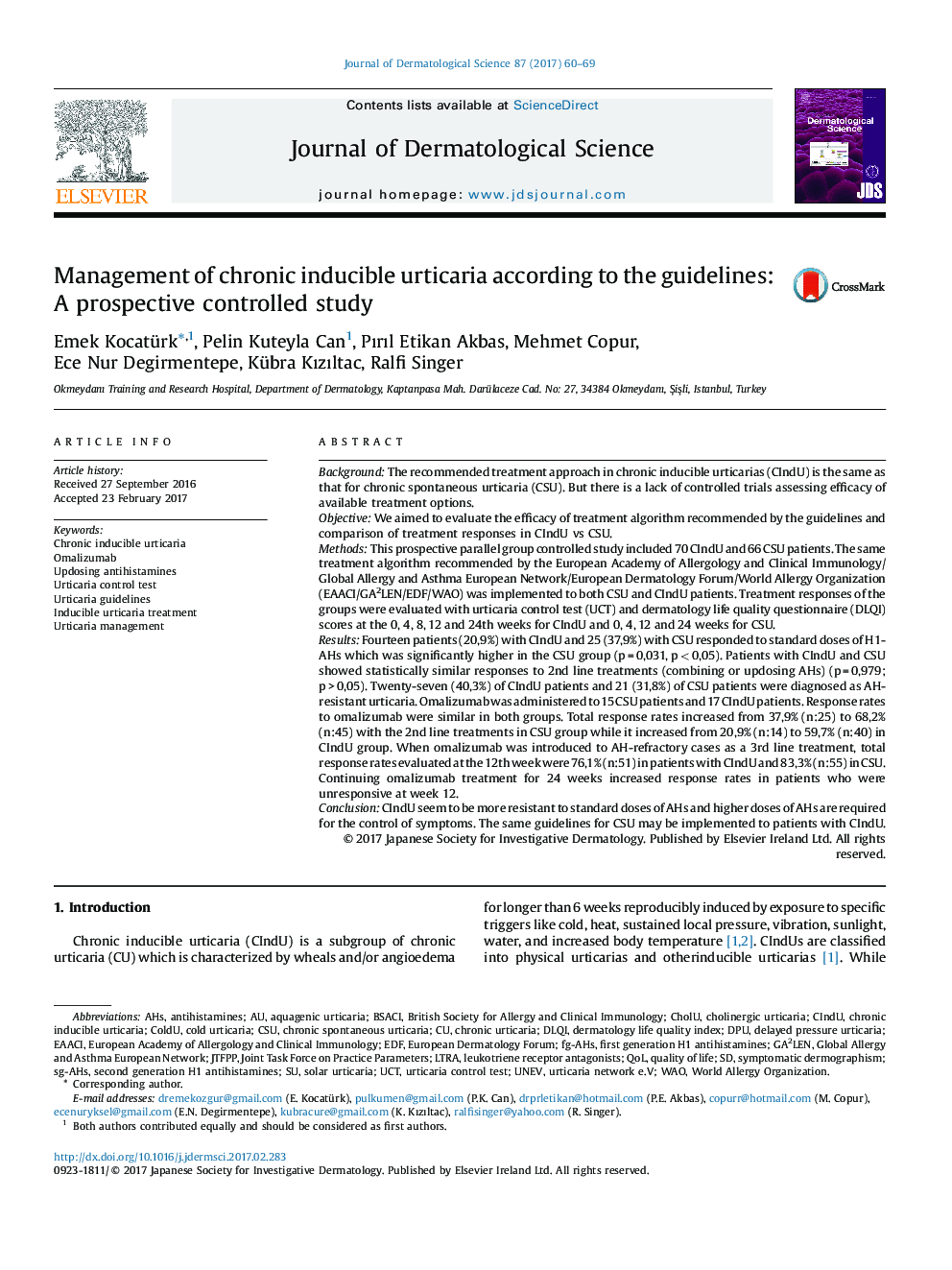| کد مقاله | کد نشریه | سال انتشار | مقاله انگلیسی | نسخه تمام متن |
|---|---|---|---|---|
| 5649120 | 1407118 | 2017 | 10 صفحه PDF | دانلود رایگان |
- CIndU seem to be more resistant to standard doses of antihistamines than CSU and higher doses of antihistamines are required for control of symptoms.
- Omalizumab increased total response rates substantially both in CSU and CInd.
- The same guidelines for CSU may be implemented for patients with CIndU.
BackgroundThe recommended treatment approach in chronic inducible urticarias (CIndU) is the same as that for chronic spontaneous urticaria (CSU). But there is a lack of controlled trials assessing efficacy of available treatment options.ObjectiveWe aimed to evaluate the efficacy of treatment algorithm recommended by the guidelines and comparison of treatment responses in CIndU vs CSU.MethodsThis prospective parallel group controlled study included 70 CIndU and 66 CSU patients. The same treatment algorithm recommended by the European Academy of Allergology and Clinical Immunology/Global Allergy and Asthma European Network/European Dermatology Forum/World Allergy Organization (EAACI/GA2LEN/EDF/WAO) was implemented to both CSU and CIndU patients. Treatment responses of the groups were evaluated with urticaria control test (UCT) and dermatology life quality questionnaire (DLQI) scores at the 0, 4, 8, 12 and 24th weeks for CIndU and 0, 4, 12 and 24 weeks for CSU.ResultsFourteen patients (20,9%) with CIndU and 25 (37,9%) with CSU responded to standard doses of H1-AHs which was significantly higher in the CSU group (p = 0,031, p < 0,05). Patients with CIndU and CSU showed statistically similar responses to 2nd line treatments (combining or updosing AHs) (p = 0,979; p > 0,05). Twenty-seven (40,3%) of CIndU patients and 21 (31,8%) of CSU patients were diagnosed as AH-resistant urticaria. Omalizumab was administered to 15 CSU patients and 17 CIndU patients. Response rates to omalizumab were similar in both groups. Total response rates increased from 37,9% (n:25) to 68,2% (n:45) with the 2nd line treatments in CSU group while it increased from 20,9% (n:14) to 59,7% (n:40) in CIndU group. When omalizumab was introduced to AH-refractory cases as a 3rd line treatment, total response rates evaluated at the 12th week were 76,1% (n:51) in patients with CIndU and 83,3% (n:55) in CSU. Continuing omalizumab treatment for 24 weeks increased response rates in patients who were unresponsive at week 12.ConclusionCIndU seem to be more resistant to standard doses of AHs and higher doses of AHs are required for the control of symptoms. The same guidelines for CSU may be implemented to patients with CIndU.
Journal: Journal of Dermatological Science - Volume 87, Issue 1, July 2017, Pages 60-69
